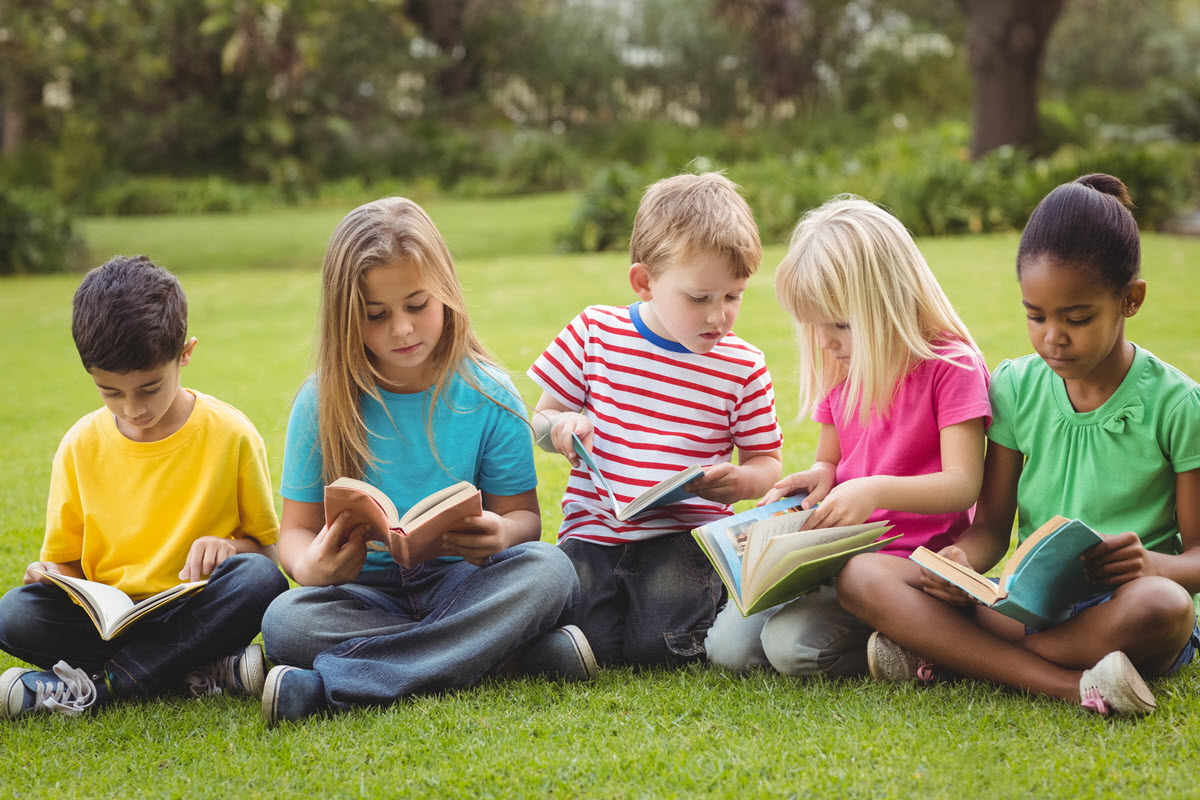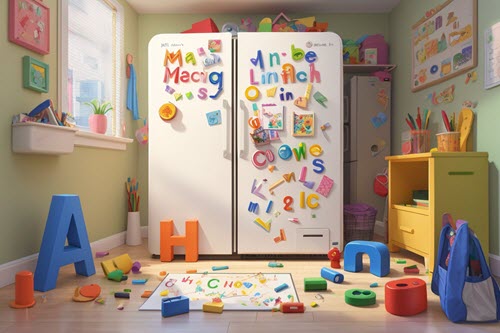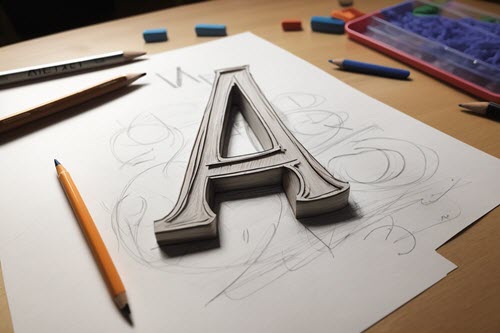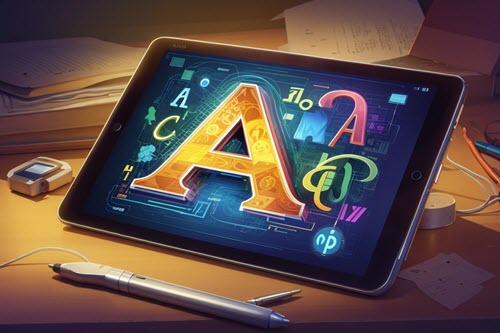A Guide to Teaching ABCs to Preschoolers: Embarking on an Alphabet Adventure
Embarking on the adventure of teaching ABCs to preschoolers is a journey filled with giggles, squiggles, and oh-so-many memorable moments.
This endeavor is much more than just singing the ‘A, B, C’ song; it’s about laying the solid foundation upon which your child’s love for literacy will flourish.
As parents, you are the first and most cherished teachers your little ones will ever have. Your gentle guidance will turn the pages of this new chapter smoothly, nurturing a budding curiosity that sprouts with each letter discovered.
The thrill of seeing your child recognize letters is unparalleled.
However, amidst this excitement, lies a common dilemma – how to make the process enjoyable yet effective?

Here, patience intertwined with the right strategies blossoms into the magic of literacy.
This article unveils a treasure trove of creative ideas and proven techniques to turn teaching ABCs to preschoolers from a daunting task into a delightful experience.
As you traverse through the sections, you’ll unearth practical tips, fun activities, and insightful suggestions that will not only aid in teaching ABCs to preschoolers but also foster a lifelong love for learning. This journey from A to Z is filled with more than just 26 letters; it’s brimming with endless possibilities for bonding, learning, and growing together.
So, let’s turn the page to the first chapter of your child’s literacy saga, shall we?
Understanding the Preschooler’s Mind
Preschoolers are at a fascinating stage of life where their minds are buzzing with curiosity, always eager to explore and learn. Their ability to soak up new concepts is like a sponge to water, making it the ideal time to introduce the alphabet.
Now, when it comes to the ABCs, it’s not just about the letters themselves, but the sounds they make. It’s like having a name and a voice; both are essential to recognize and understand the character.
So, while little Timmy sees the letter ‘A’, he also learns to associate it with the sound ‘ah’.
Teaching both letter names and sounds simultaneously opens up a fuller, richer understanding of the alphabet, laying a sturdy foundation for the literacy journey ahead.
As our little ones get comfortable with recognizing letters and resonating with their sounds, they stand at the doorstep of reading. It’s like unlocking a door to a new world filled with adventures waiting to unravel through words.
This transition is both thrilling and crucial.
It’s where the seeds of literacy sown earlier start to sprout. Yet, the shift from knowing the ABCs to reading is a significant one and having the right support can make all the difference.
Engaging with the best learn to read programs can be that supportive friend holding your child’s hand as they step into the enchanting world of reading. These programs are designed to make this transition smoother and enjoyable, ensuring the flame of curiosity continues to burn bright, fuelling the journey of literacy that’s only just begun.
This stage of preschool learning is a beautiful blend of challenges met with curiosity, each day bringing something new to the table, making the learning process a delightful adventure.
Setting the Stage for Success
Creating a Friendly Alphabet Playground at Home
Creating a conducive learning environment at home is akin to setting up a playground where your child can freely explore the wonders of the alphabet. It’s about crafting spaces where letters are not just seen but are interacted with, in a fun, stress-free manner.
Simple steps like having alphabet magnets on the fridge, or alphabet mats on the floor can make letters a part of their everyday play.
You could also have a cozy reading nook with a selection of alphabet books that invite them to delve into the world of letters at their own pace.
The Magic of Repetition
Now, onto a significant part of this journey – repetition.
It’s the magic ingredient in the recipe for success in teaching ABCs to preschoolers. When your little one goes over the letters and their sounds repeatedly, it’s like treading a path over and over until it becomes a well-worn, familiar trail.
However, repetition should never feel like a chore.
It should be more like singing their favorite song or visiting a beloved grandparent – something they look forward to.
Patience and Encouragement: The Invisible Pillars
This brings us to the heart and soul of the learning journey – patience.
Your patience and encouraging demeanor are the gentle breezes that propel the sails of their curiosity.
There will be days when progress seems to be at a snail’s pace, and that’s okay.
Each child’s learning pace is unique and beautiful in its own way. Your continual encouragement, even on days when the letter ‘B’ is stubbornly called ‘D’, will foster a love for learning. It’s about celebrating the little wins, embracing the hiccups, and enjoying the ride together on this literacy adventure.
With a nurturing environment, a sprinkle of repetition, and a heart full of patience, you’re not just teaching the ABCs; you’re creating cherished memories filled with love, laughter, and learning.
Active Learning: A Hands-On Approach
Engaging the tiny hands and boundless energy of preschoolers in learning the alphabet can be a delightful adventure. A hands-on approach not only caters to their natural inclination to touch, feel, and explore but also makes learning an interactive, fun-filled experience.
Here’s why hands-on learning activities centered around letters are a game-changer.
The Magic of Hands-on Learning
When your child gets to interact with letters in a tangible way, the abstract concept of the alphabet starts taking a concrete form in their little minds.
It’s like the difference between just looking at a picture of a cat and actually getting to play with one.
The latter experience is rich, interactive, and leaves a lasting impression.
Similarly, hands-on activities make letters more than just shapes on a paper; they turn them into playful friends ready to embark on exciting adventures.
Alphabet Scavenger Hunts
Kids love a good game of treasure hunting.
Turn it into an educational game by having them hunt for letters. Hide letters around the house and give them a list of letters to find. As they dash around looking for the ‘treasures’, they not only burn off some energy but also get familiar with different letters.
Letter Tracing in Sand or Shaving Cream
Let’s take the learning outdoors or perhaps to the bathroom tiles!
Spread some sand on a tray or shaving cream on a tile, and encourage your child to trace letters with their fingers. The sensory feel of the materials coupled with the visual impression of the letter enhances their recall and recognition.
Crafting Letters with Play Dough
Play dough is a fantastic medium to craft letters. Rolling, pinching, and molding the dough into letter shapes is not only fun but also a great way to develop their fine motor skills.
Plus, it’s a creative way to introduce letters and sounds, one squishy shape at a time!
Building Letters with Blocks
For the little builders in the house, constructing letters out of blocks can be a thrilling challenge. It’s like solving a puzzle with a rewarding outcome – a towering letter standing tall!
This activity not only teaches them the shape of the letter but also the spatial understanding of how each line and curve comes together to form a letter.
In a Nutshell
Each of these hands-on activities provides a unique, enjoyable experience making learning the ABCs a playful venture rather than a tedious task. It’s all about blending learning with play, making the process as natural and joyful as possible.
So, roll up those sleeves, dive into these activities, and watch the magical world of letters unfold before your child’s eyes, one playful experience at a time.
Incorporating Multi-Sensory Techniques
When it comes to learning, every child is unique.
They have their own little ways of absorbing and understanding the world around them. Tapping into multiple senses while learning the alphabet can create a rich and enjoyable learning experience.
Let’s dive into the various ways kids learn and how we can cater to each to make learning the ABCs a joyful adventure.
The Four Avenues of Learning
- Visual: Some kids learn best by seeing. They benefit from colorful pictures, diagrams, and watching things being done.
- Auditory: Others grasp concepts better when they hear the information. Sounds, music, and verbal instructions work wonders for them.
- Reading/Writing: Reading and writing things down can be the preferred method for some to learn and remember new information.
- Kinesthetic: Many children love to learn by doing. They thrive on touch, movement, and hands-on experiences.
Singing Alphabet Songs
Music is a universal language that resonates with everyone, especially kids. Singing alphabet songs is a fun way to introduce letters and sounds. The rhythm and melody make it easier for them to remember the sequence of the alphabet, and before you know it, you’ll catch them humming along!
Watching Educational Videos
In the digital age, educational videos are a great resource. They combine visual and auditory elements, making learning engaging and enjoyable. Through catchy tunes and vibrant animations, letters come to life, making the learning process exciting.
Tactile Letter Games
Getting hands-on with letters can be a blast! Tactile letter games allow children to touch and feel the letters, engraving the shapes and sounds in their memory. Whether it’s tracing letters in sand or matching letter shapes with their corresponding spaces, tactile games provide a kinesthetic learning experience.
Phonemic Awareness vs Letter Sound Correspondence
The journey of literacy goes beyond just recognizing letters.
It dives into the realm of sounds with phonemic awareness and letter sound correspondence playing crucial roles. Phonemic awareness is the ability to hear and manipulate individual sounds in words, while letter sound correspondence is about connecting letter symbols to their corresponding sounds.
By blending various sensory techniques into the learning routine, you’re not just teaching your child the ABCs, but opening up a world of fun, interactive, and effective learning experiences.
Digital Resources: Harnessing the New to Boost the Knew
In this modern era, technology has snugly found its place even in the realm of early education.
While the traditional chalk and board have their charm, digital resources bring in a breeze of fresh, fun, interactive learning experiences. Let’s delve into how you can harness these digital tools to make the ABC learning journey a thrilling adventure for your preschooler.
Reputable Online Platforms and Apps
There’s a plethora of online platforms and apps designed to make learning the ABCs engaging.
Websites with interactive alphabet games, and apps with colorful, animated characters who take your child on a literary adventure can be quite captivating. They introduce letters and sounds in a playful, interactive manner, making learning feel like a fun game.
It’s important to choose platforms that are reputable and tailored for preschoolers’ learning needs.
Complementing Traditional Methods
Digital resources can be a brilliant companion to traditional teaching methods.
While nothing can replace the personal interaction and the tactile experience of handling physical letters, digital platforms add a layer of interactive fun.
They offer a visual and auditory feast of colors, sounds, and animations which can be very appealing to young minds. For instance, an app might have a friendly animated character teaching the letter ‘A’ with a catchy tune, which could be a delightful supplement to your own teaching at home.
Moreover, digital resources provide a flexible learning environment. They allow your child to learn at their own pace, revisiting lessons whenever they wish, which is great for reinforcement.
In a nutshell, integrating digital resources along with traditional methods can create a rich, multifaceted learning environment.
It’s like having the best of both worlds, where the charm of traditional learning meets the exciting, interactive world of digital education, making the process of learning ABCs a memorable and enjoyable journey.
Celebrating Milestones and Overcoming Challenges
Every step your child takes on the path of learning the ABCs is a milestone worthy of celebration. However, like any adventure, there will be ups and downs.
Here’s how to navigate through the joys and challenges of this journey.
Celebrating Every Win
Every letter recognized, every sound correctly associated, is a step forward and a reason to celebrate.
A high five, a word of praise, or a little dance of joy can mean the world to your child.
It’s not just about the big achievements; the small victories count too. Positive reinforcement boosts their confidence and fuels the desire to learn more. It’s the sunshine that brightens their learning path, making the journey enjoyable and fulfilling.
Navigating Through Hurdles
The learning process isn’t always a smooth sail. There might be letters or sounds that are trickier to grasp.
It’s essential to recognize these hurdles without letting them turn into roadblocks. Patience and encouragement are your best allies here. If a certain letter is proving to be a tough nut to crack, try approaching it with a different game or activity. Maybe a new song or a colorful video could make the learning easier and fun.
Also, it’s important to remember that every child has their own pace of learning.
Comparing their progress with others can be disheartening. Instead, focus on their individual journey, appreciating the effort and the learning, irrespective of the pace.
Celebrating milestones and gracefully overcoming challenges are the threads that weave the beautiful tapestry of your child’s learning experience. It’s about creating a nurturing environment where learning the ABCs becomes a cherished journey filled with love, understanding, and endless encouragement.
Practical Daily Integrations
Learning doesn’t have to be confined to a specific time or place.
In fact, integrating alphabet learning in daily routines can make the journey more natural and enjoyable. Here are some practical tips to weave the ABCs into the fabric of everyday life.
Everyday Objects as Learning Tools
Your home is a treasure trove of learning materials waiting to be discovered. From cereal boxes to toys, letters are everywhere. Point out letters on packaging while you’re in the kitchen, or on signs during a drive. It’s a simple way to make letter recognition a part of their daily routine.
Encouraging Active Participation
Invite your child to join you in reading the labels, signs or anything with letters on it. Make it a playful challenge to find certain letters around the house or while out and about. This active participation makes learning an interactive and fun endeavor.
Teaching Letters in Context
Learning letters in context helps in understanding and retention. For instance, associating the letter ‘A’ with ‘Apple’ gives a tangible context to the abstract letter. This way, letters become more than mere shapes; they start to hold meaning.
Tracking Growth
Keeping a fun, visual record of the letters your child has learned can be encouraging for both of you. It could be a colorful chart on the wall where you add a sticker for every new letter learned.
Combining Letter and Number Recognition
Introduce an alphabet list with numbers as a playful way to blend letter and number recognition. It’s a creative approach to expand their understanding while keeping the learning engaging.
Incorporating the ABCs into daily routines makes learning a part of life, not a task. It’s about making the most of the little moments that, together, build a strong foundation for your child’s literacy journey.
Conclusion
As we come to the close of this enlightening journey, it’s time to take a moment to reflect on the milestones that lay ahead on the path of teaching ABCs to your preschoolers.
This voyage, sprinkled with giggles, squiggles, and a lot of heart, is about nurturing the roots of literacy from which a lifelong love for learning will blossom.
- We explored the essence of understanding the curious minds of preschoolers, the significance of creating a conducive learning environment, and the magic that unfolds when hands-on learning meets playful curiosity.
- We delved into the multi-sensory techniques that make learning a joyful experience, and how the digital world can play a friendly companion in this adventure.
- The importance of celebrating every small victory and gracefully navigating through the challenges was highlighted, reminding us that patience, coupled with the right strategies, can turn hurdles into stepping stones.
- The practical daily integrations emphasized how seamlessly learning can be woven into the fabric of everyday life, making each day a page in the book of knowledge.
The journey of teaching ABCs to preschoolers is indeed filled with more than just 26 letters. It’s an expedition brimming with endless possibilities for bonding, learning, and growing together. The tender guidance you provide as parents will be the cherished pages in the first chapter of your child’s literacy saga.
So, with a heart full of enthusiasm and a mind armed with practical tips and creative ideas from this article, you are now ready to turn this task from a daunting endeavor into a delightful experience. The joy that comes from watching your child recognize letters and delve into the world of literacy is unparalleled and absolutely worth every effort.
As you embark on this enriching quest, remember, every letter learned is a page turned in the beautiful story of your child’s journey into the world of literacy.
And oh, what a wonderful story it is set to be!

Natalie is a full-time blogger and former elementary school teacher who specializes in helping parents teach their kids to read. With a qualification in Early Childhood Education, over 7 years of experience in education, and a passion for literacy, Natalie provides practical tips, activities, and resources for parents looking to support their child’s learning-to-read journey. She is the proud mom of two young readers and loves sharing her knowledge and experience with other parents. Natalie enjoys spending time with her family, reading, and exploring the great outdoors when she’s not blogging.



